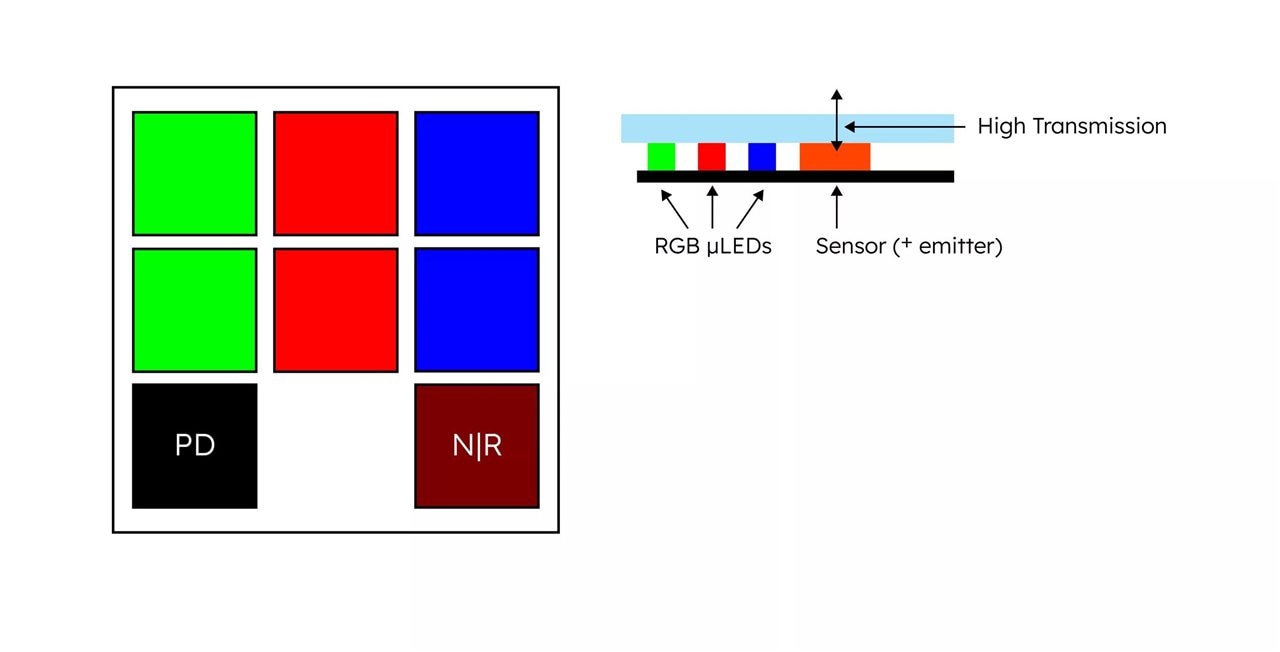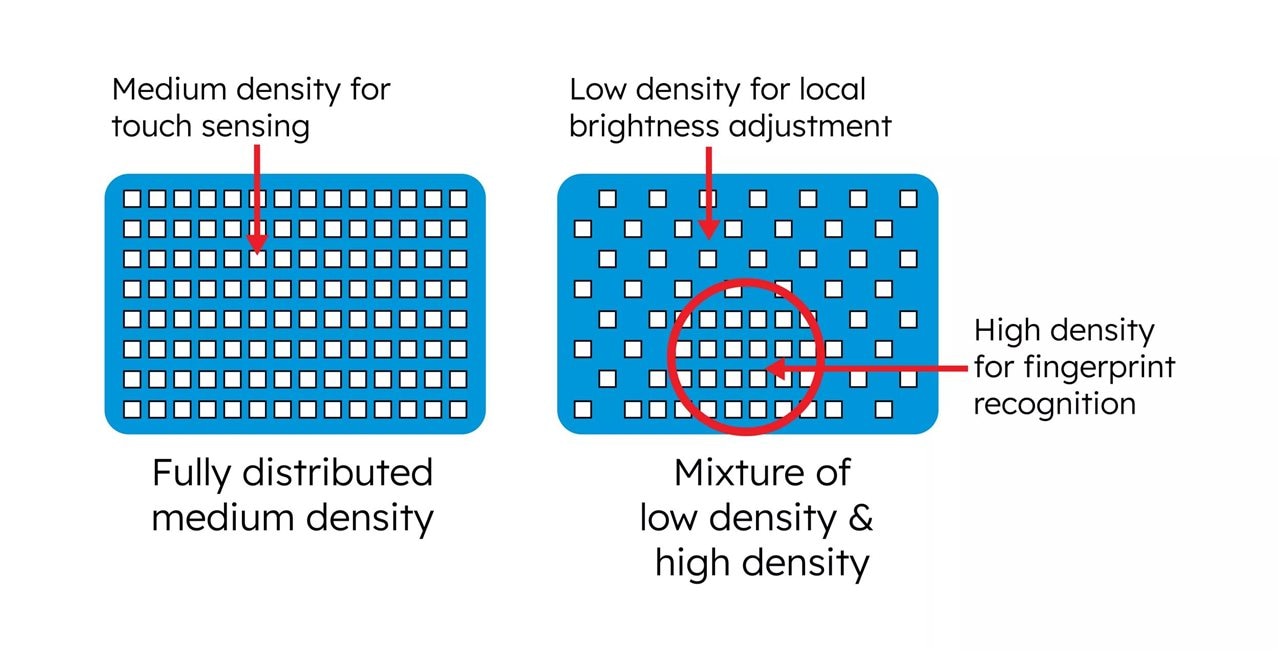Challenges of existing OLED display sensor implementations
Traditionally, front-facing sensors in mobile devices perform functions such as display brightness control, white balancing and face authentication. These sensors have often been integrated in cut-outs in the display (bezels). The trend toward bezel-less displays means sensor manufacturers have developed sensors that can be integrated behind the display.
In OLED displays and “behind OLED” sensing, an area where ams OSRAM is a technology pioneer, the sensors must be placed behind a display plane densely populated with OLEDs. This behind OLED sensing technology presents some implementation challenges due to the need for tight synchronization between the display system and the sensor system to avoid interference between the OLEDs and the sensors. The BOLED sensors must offer very high sensitivity to provide sufficient optical signal strength when operating behind an OLED display that has very low transmissivity (typically less than 10%). Also stacking a system with separate planes – one for the display, another for sensing – increases the overall height of the sensing display.




